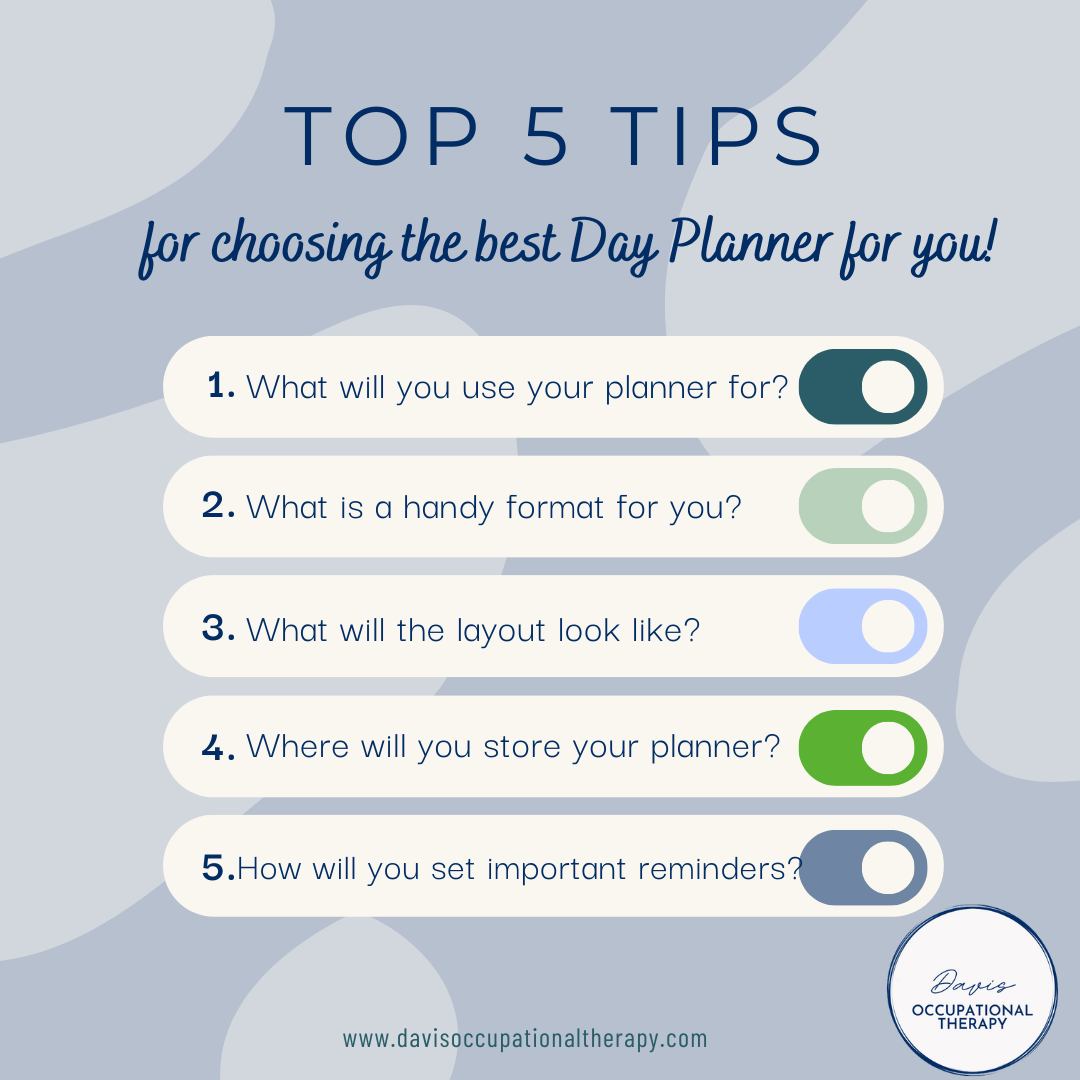Top Tips for Choosing the Best Day Planner for ADHD Adults
Many people with ADHD struggle to use a watch or a planner. This is not surprising, as both actions require a great amount of concentration. A watch reminds them of the time and a planner enables them to plan ahead. People with ADHD often live as if time does not exist. Often they have little idea of the actual time, are running late or have difficulty estimating the time needed for certain tasks. This means that tasks take more time than they thought which can result in being late for their next appointment.
Head to the Instagram page to access more resources.
”Plan your work today and everyday, then work your plan”.- Margaret Thatcher
Using a Day Planner
A planner can be a useful tool for someone with ADHD! But somebody with ADHD does not usually carry one. The following tips can help individuals start to think about ways that they can incorporate a planner into their daily routine and how to deal with not succeeding the first time.
It is recommended that individuals with ADHD learn to use a planner in stages.
First, acquire a planner, find a safe place to store it and bring it with you wherever you go!
Begin to look at the planner twice a day.
Go through the weekly structure once a week (consider doing this with a partner, friend, or a family member) and write down upcoming appointments.
1. Purpose of the planner
Think about what you want to use a planner for: work? Home life? Note taking? Appointments?
2. Format
What is a handy format for you? You should be able to carry your planner with you in a bag or jacket pocket. Book type? Electronic? Smart Phone?
3. Days per page
What is a handy layout? Often a planner with a weekly overview per two pages is handy as you can visualize the entire week at a glance.
4. Utilizing the planner on your phone
Many people like to note appointments on their mobile phone and use this as a planner. You can also set an alarm. Use this option for important appointments.
5. Finding a fixed location
Where will you leave your planner? Make a routine of this and build it into your current routine. For example, place the planner at home next to your mobile phone and your keys. Find a fixed and consistent place.
6. Notice board / Calendar
In addition to a planner, you can hang up a notice board or calendar somewhere you can see it often, for example, in the kitchen. Use it to attach appointment cards, invitations, etc. This is handy for the entire family to refer to; however it is also important to have all important dates in your day planner.
7. Regular appointments first
Firstly, enter all your fixed/recurring appointments and commitments in your planner. This will give you a sense of how much time you then have left in the week for other obligations.
8. Plan relaxation
Make time to relax, talk to your loved ones in the evenings, spend time with friends, spend time in nature or do something special just for yourself.
Important Reminders
Keep things together
Keep things that you need together in a fixed place (e.g. your keys, phone, and planner). You will then have less chance of losing them or forgetting to take them with you.
2. Possible pitfalls
Not starting to use the planner until you have come up with a perfect system. This often results in not using a planner at all. Remember to start in phases, small steps!
Giving up if you don’t succeed in using a planner. Allow yourself time to get used to it. Find out what the problem is and look for a solution. It takes time to develop a routine and it will be by trial and error.
Have you found a great day planner? Please share in the comments.
References: Kooij. (2012). Treatment: Coaching Adults with ADHD. In Adult ADHD (pp. 169–207). Springer London. https://doi.org/10.1007/978-1-4471-4138-9_5

